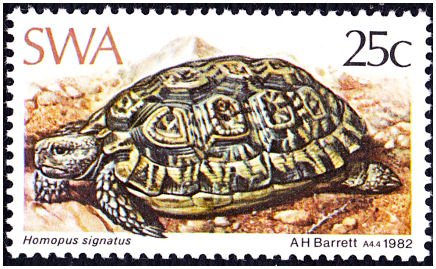The speckled tortoise (Homopus signatus) is a long-lived, iteroparous species in South Africa that is thought to be secure in areas that meet the species’ known requirements. To verify its stability, I monitored a dense speckled tortoise population, integrating 2 mark-recapture studies (2000–2004 and 2012–2015) in long-term joint live and dead encounters and POPAN population models. From 2000 to 2015, the study site remained fenced, ungrazed, and was not modified in any way, yet the size-class frequency distribution, sex ratio, and abundance of speckled tortoises drastically changed. Population numbers decreased 66%, mainly because of the disappearance of juveniles and males. Modeling results identified a reduction in the number of entrants into the population (via births and immigration) as the likely cause of population changes, whereas apparent survival remained high.
Source: Loehr, V. J. T. (2017), Unexpected decline in a population of speckled tortoises. Jour. Wild. Mgmt.. doi:10.1002/jwmg.21217
http://onlinelibrary.wiley.com/doi/10.1002/jwmg.21217/full

- Login om te reageren
